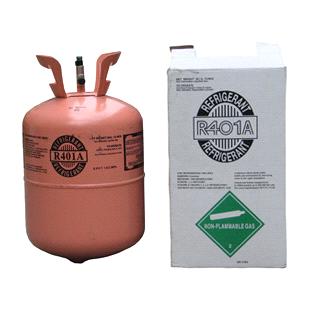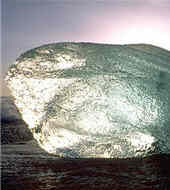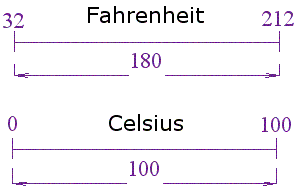UNIONES DE COBRE
Este tipo de tuberías es utilizado para redes de gas o conducción de agua caliente, se presenta en dos tipos tubería de cobre rígida y flexible.
Las uniones para tubería rígida de cobre, se presentan en muchos modelos como unión normal, reducciones rectas, racores, etc.
Para soldar este tipo de uniones se utiliza una pasta especial para cobre no corrosiva (no ácida) hay dos tipos: soldaduras blandas nro 50 y nro95 .
UNION DE TUBERÍA DE COBRE RIGIDA POR SOLDADURA
Soldadura de 50 partes de estaño y 50 partes de plomo funde a 183°c
No. 95. liga de 95 partes de estaño y 5 partes de antimonio, funde a 230 Oc.
PROCEDIMIENTO PARA SOLDAR TUBERÍAS RÍGIDAS.
- Cortar el tubo con cortador de disco o segueta fina.
- quitar las rebadas con lima o escariador o con el cortador de disco.
- Limpiar el extremo del tubo al interior y exterior con lana de acero.
- Aplicar una capa delgada y uniforme de pasta para soldadura al exterior del tubo y al interior de la unión que lo va a recibir.
- Se empalma el tubo a la unión hasta el tope. Este tipo de soldadura se debe hacer con soplete de llama.
- Aplicar la llama del soplete a la unión y no al tubo para así garantizar que la soldadura quede uniforme en todo el trabajo.
- Alcanzada la temperatura se funde la soldadura y llena todo el espacio capilar, El exceso de soldadura se limpia con estopa o tela seca.
UNIONES EN TUBERÍA FLEXIBLE
Metodología para acoplar la tubería de cobre flexible
1. desenrollar adecuadamente la tubería.
2.usar el corta tubo adecuado, aceitar con aceite la cuchilla.
3.Remover y limpiar con la rima que lleva el corta tubo, la revada interior que quede del corte.
4.Introducir el extremo del tubo en el orificio adecuado del bloque de la herramienta de expansión.
5.Apretar el cono de expansión sobre la parte del tubo que sobresale hasta que asiente aquel sobre el bisel formado. Lubricar cono.
6.Unir y colocar todos los accesorios que trae el racor unión como anillos, tuercas. Etc.
Este sistema se puede unir mediante soldadura si uno de los extremos es ensanchado

TUBERÍA UNIDA MEDIANTE SOLDADURA ELECTRICA
Este tipo de unión es de especial cuidado ya que requiere de mano de obra calificada, en nuestro país todavía esta en desarrollo tal técnica.
Esta consiste mediante soldadura eléctrica hacer círculos durante toda la sección a soldar de esta forma se evita que le cordón quede débil y pueda aguantar las altas presiones a las que son sometidas este tipo de uniones, son utilizadas para el transporte de aguas a hidroeléctricas.
TUBERÍAS UNIDAS MEDIANTE BRIDAS O PERNOS
Estas son muy comunes, consiste en una serie de pernos pasando de lado a lado alrededor de un circulo en especie de platinas soldadas ala tubería en la mitad de la unión lleva un empaque o una platina esta de acuerdo para controlar el paso del agua.
Esta son apretadas mecánicamente `por medio de tuercas.
COPPER FITTINGS
This type of piping network is used for driving gas or hot water is available in two types of copper tubing rigid and flexible.Rigid pipe joints of copper, found in many models such as joint normal, straight cuts, fittings, etc..For this type of weld joints using a special paste to copper corrosion (no acid) there are two types: soft solders 50 and nro95 nr.UNION COPPER RIGID PIPE WELDWelding of 50 parts of tin and 50 parts of lead melts at 183 ° cNo. 95. league 95 parts of tin and 5 parts of antimony, melts at 230 oC.RIGID PIPE WELDING PROCEDURE.Cut the tubing cutter or hacksaw thin disk.remove with a file or reamer rebadas or disc cutter.Clean the end of the tube inside and outside with steel wool.Apply a thin even coat of solder paste to the outside of the tube and into the union that it will receive.It connects the tube to the union until it stops. This type of welding should be done with torch flame.Apply the flame of the torch to the union and not the tube in order to ensure that the weld is uniform throughout the work.Temperature is reached the solder melts and fills the capillary space, the excess solder is wiped with dry cloth or tow.
UNIONS IN FLEXIBLE PIPEMethodology for coupling the flexible copper tubing1. properly unwind the pipe.2.usar the short proper tube, oil to oil the blade.3.Remover and clean with the rhyme that takes the short tube, the inner revada be cut.4.Introducir tube end into the appropriate hole of the block of the expansion tool.5.Apretar the expansion cone over the protruding tube until it seats on the bezel that formed. Lubricate the cone.6.Unir and put all the accessories that bring the union and coupling rings, nuts. Etc.This system can be joined by welding if one end is widened
UNITED BY ELECTRIC WELDING PIPEThis type of binding is of special concern because it requires skilled labor in our country is still developing this technique.This is done by electric welding circles throughout the section to be welded in this way it prevents cord is weak and can withstand the high pressures that are put such unions are used to transport water to hydroelectric plants.UNITED BY PIPE FLANGES OR NUTSThese are very common, is a series of bolts passing side by side around a circle in kind of wing plates welded piping in the middle of the junction has a gasket or a platen agrees to control the passage of water.This is mechanically tightened by nuts'.













